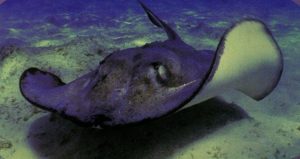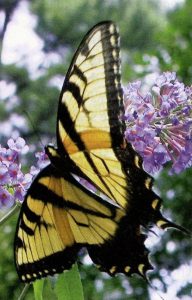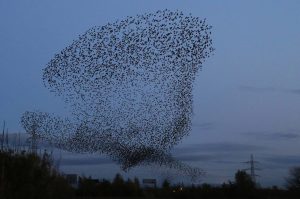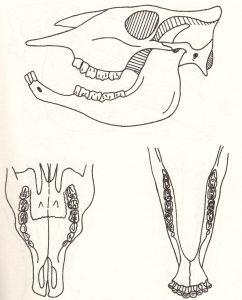In many fields of science and engineering today biomimicry is all the rage. Biomimicry is where researchers look at the life forms existing in the world, see the advantages of existing design, and attempt to copy (mimic) the design for their own use. Inherent in that process is the assumption that the things being copied exhibit intelligent design. The question is who or what intelligently provided the design being mimicked? The biblical creationist understands that the Designer is God, specifically the Lord Jesus Christ as explained in numerous verses in the Holy Bible. The problem here is that secularists ascribe the design to non-intelligent things like Mother Nature or natural selection. These things are not capable agencies for providing intelligent design! So, I think this activity can be correctly described as “plagiarizing God.”
Yes, this is a serious accusation that I am making. To “plagiarize” is to take ideas, designs, writings etc. from another and pass them off as one’s own, or to attribute these things to someone other than the true originator.
Now, I need to be careful not to plagiarize myself, so I gladly attribute this “plagiarizing God” concept to the person from whom I first acquired the idea. I was introduced to the concept when I read the March 6, 2024, email newsletter that came from Shane Morris of the Colson Center for Christian Worldview.
I have written in the past about biomimicry in order to focus attention on the wonderous design in God’s living creation. In one article I wrote critically about the evolutionary ideas of the Biomimicry Institute. Usually, I just describe an example of biomimicry that is interesting and glorifies the Creator. Recently I received The Trend in Engineering magazine (August 2024 edition) from my alma mater the University of Washington. This issue consisted of a focus on several biomimicry projects currently ongoing at the U of W. As is usual for secularists each of the examples given credits someone or something besides the true Creator for the designs that have provided the bioinspiration for the item or project being researched.
The projects are interesting so I will provide a summary here of the examples in The Trend in Engineering article. There are five biomimicry examples in the cover story which is called “Engineering by Nature.”
Example 1: “Stingray-inspired underwater propulsion.” In this project an interdisciplinary team of U of W engineering students are studying the unique undulating swimming abilities of batoids (like stingrays) in the hope that they can learn and then apply the very efficient batoid propulsion to manmade underwater vehicles. The research combines biological studies of batoid anatomy with physics-based modeling and testing. The article does not indicate that any experimental models have yet been engineered by the team. It would be amazing indeed, at some future date, to see some sort of submarine undulating silently through the deep.
Southern Stingray.
Example 2: “Exploring the world through butterfly eyes.” An electrical and computer engineering affiliate of the U of W has been studying butterfly eyes since 1966. He discovered that tiny butterfly eyes exhibit amazing and unexpected capabilities. One is the discovery of what is called “butterfly eyeshine,” a phenomenon most often found in nocturnal animals. Why would butterflies need this ability since they are only active during daytime? Anyway, the research has resulted in applications that have advanced some machine vision and manufacturing processes. The research continues. Perhaps it would be more successful if the researchers started from a presupposition that the butterfly had internal created capabilities rather than capabilities as a result of external natural influences.
A Beautiful Butterfly.
Example 3: “The nature of falling.” An assistant professor in computer science and engineering at the U of W has developed a tiny sensor-carrying device that is modeled after how dandelions use the wind to distribute their seeds. The purpose of the device is to provide a way to distribute hundreds of tiny wireless sensors that could monitor conditions across large plots of land. No detail was provided in the article as to why this would be advantageous. I wonder if one application might be to measure the temperature at various points in a forested area after a forest fire to see if there were areas hot enough to reignite.
A Dandelion and Flying Seeds.
Example 4: “To improve self-driving vehicles, look to birds.” Some kinds of birds can fly complex patterns in what are called swarms without the birds smashing into each other. If one has ever witnessed this behavior, whether in person or on video, it is a sight that is truly marvelous. I think most people would find it difficult to comprehend how the birds are able to accomplish the swarms.
A professor of mechanical engineering at the U of W has improved a mathematical model that describes how these birds flock together while suppressing noise that would confound their motion. One of the proposed applications for the professor’s research would be for fleets of self-driving vehicles. The professor says that his algorithm removes high frequency noise in a manner similar to the way that the swarming birds do. He says, “You don’t want to follow the noise; you want to follow the motion.”
I know that most newer vehicles on the roads today already have several collision avoidance capabilities using cameras and computers. So, I assume the professor’s research has the aim of improving what already exists in the field of collision avoidance.
A Bird Swarm in Action.
Example 5: “Biting into fracture-resistant materials.” The final biomimicry article is on what a group of U of W engineering researchers are looking at in order to take advantage of the design inherent in mammal tooth enamel. The Trend article reads, “Teeth rely on enamel which is arguably one of the most damage-resistant materials in all of nature. We are using reverse engineering to interpret what nature has done.” The article continues, “Why would Mother Nature put this material [tooth enamel] in this region when it’s subject to so many cycles of contact?”
So, the plagiarizing of God in this article is clear to see. The human researchers who found this “unexpected” design that works so well by studying the teeth and skulls of a number of mammals. Some of the details of what they call “crack constraining” design in tooth enamel in the mammals is available to learn from the words of the Trend article. The tragedy in my mind is that the researchers repeatedly attribute the intelligence inherent in tooth enamel design to brainless Mother Nature and not to the true Designer, Jesus Christ.
Herbivore Skull and Teeth Design.
The wrath of God is being revealed from heaven against all the godlessness and wickedness of people, who suppress the truth by their wickedness, since what may be known about God is plain to them, because God made it plain to them. For since the creation of the world, God’s invisible qualities—his eternal power and divine nature—have been clearly seen, being understood from what has been made, so that people are without excuse. (Romans 1:18-20.)
In summary, those who plagiarize God are without excuse.
J.D. Mitchell







